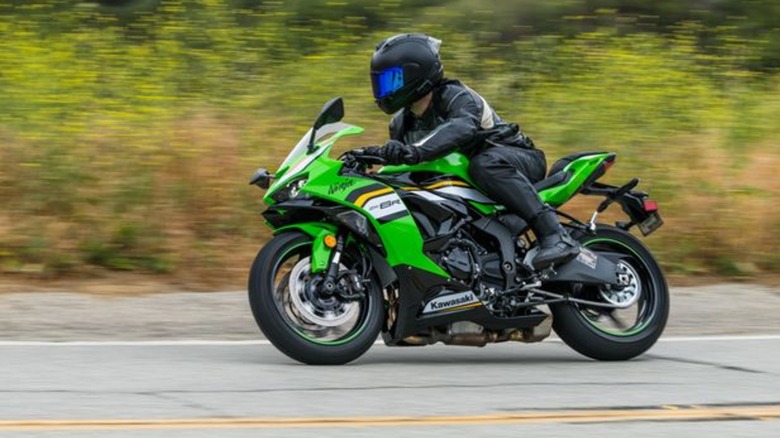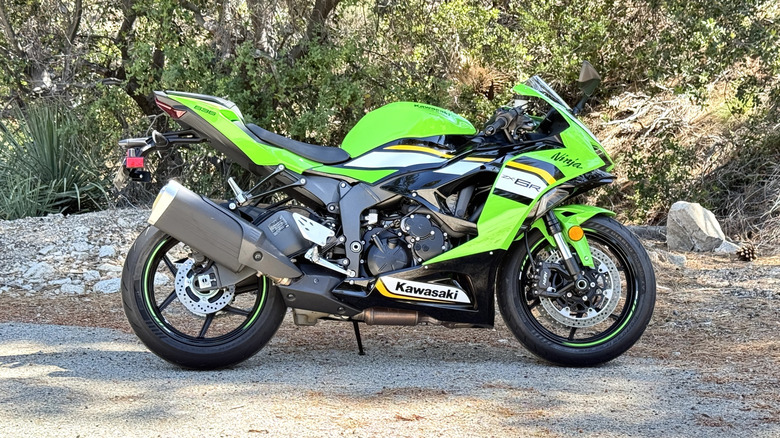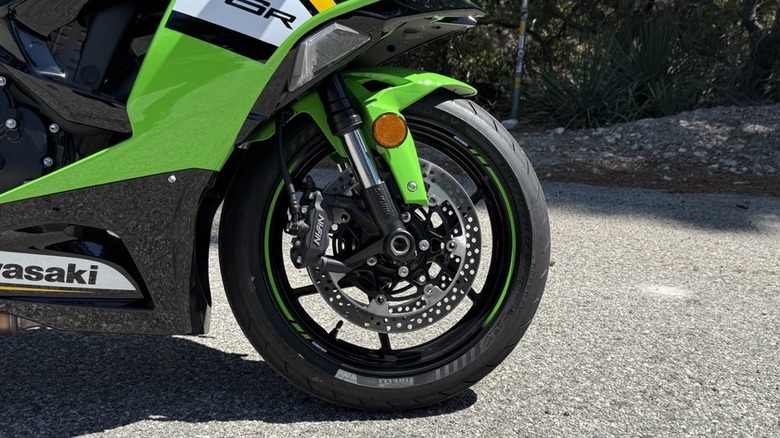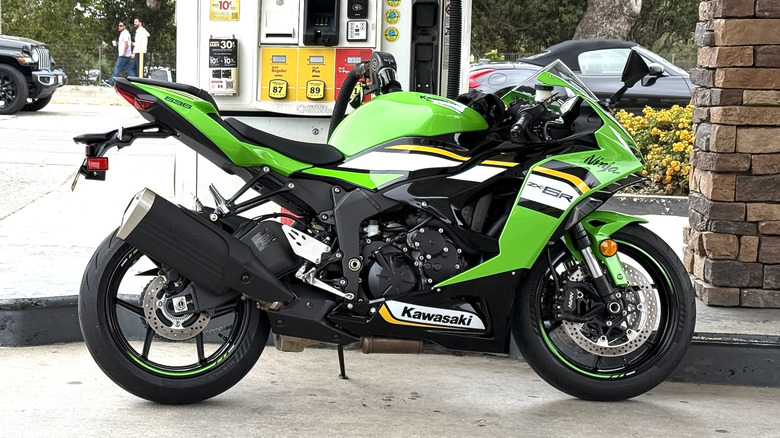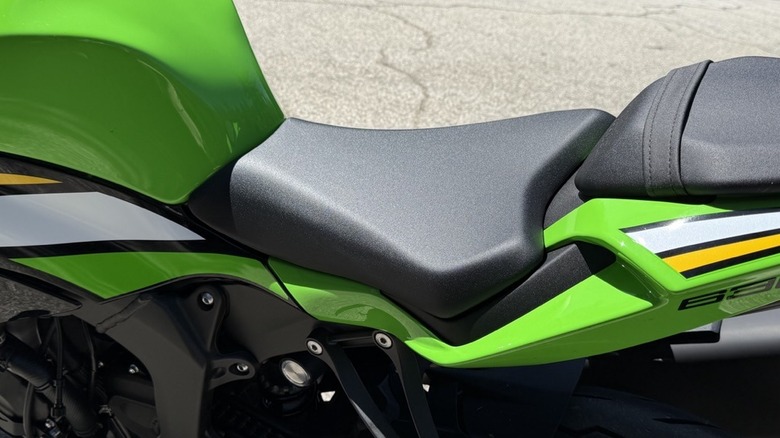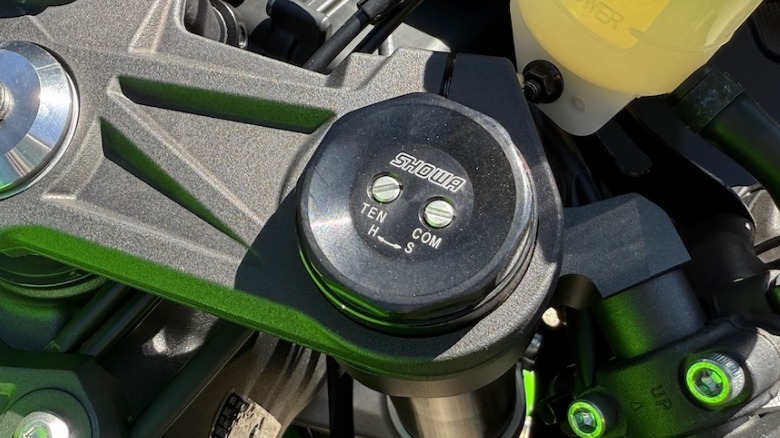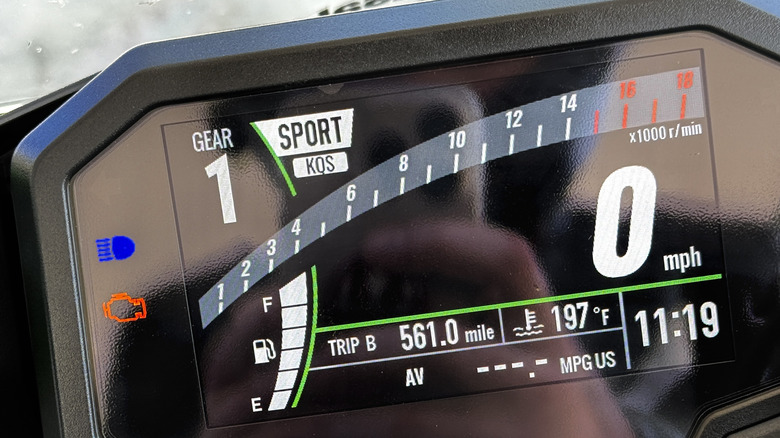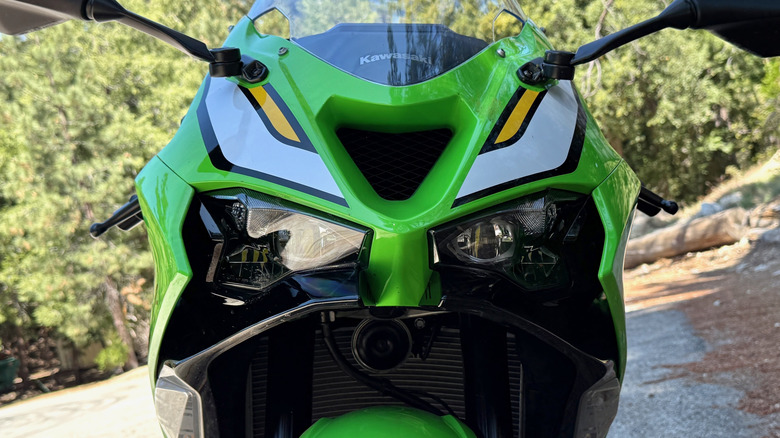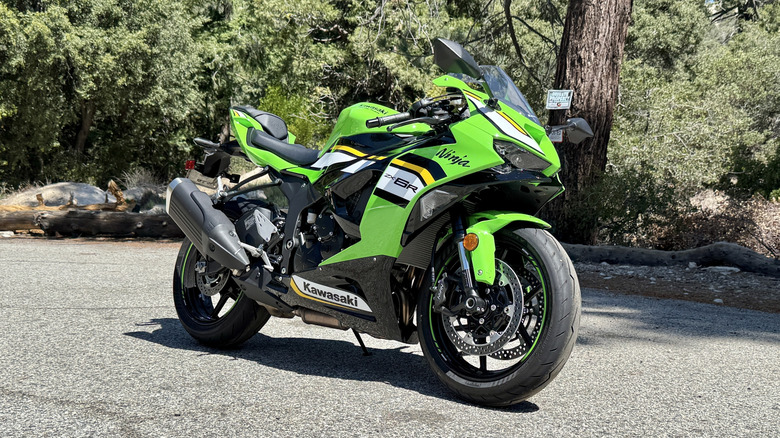2025 Kawasaki Ninja ZX-6R Review: The Goldilocks Sportsbike
For me, there's always been something very Goldilocks and the Three Bears about 600cc sportbikes: they're just right in almost every way. They're lightweight enough to feel sharp and athletic around corners. They're powerful enough for the kind of outright speed you expect from a sportbike. They're reasonably priced, too, especially when you compare them to their 1,000cc siblings.
Sure, liter bikes like the newest Ninja ZX-10R we just tested get all the latest tech, and in the proper hands they'll get you going down a racetrack straightaway at wild speeds, but 600cc's are where it's at for me. And even though it has a bit more displacement than the average 600cc bike, the Kawasaki Ninja ZX-6R offers the exceptional balance between size and performance that many riders are looking for, without breaking the bank in the process. The ZX-6R is like porridge that's the ideal temperature, a chair that has proper padding, and a bed that fits just right.
A larger-than-average powerplant
I recently rode the latest Kawasaki ZX-6R for a few weeks, living with it in regular commuting scenarios and taking it for blasts through the canyons on the weekends, and I was never disappointed with the power. The ZX-6R gets its thrust from a 636cc inline four-cylinder engine that produces 127 horsepower and 52.1 lb-ft of torque. One of the high points of riding this middleweight Ninja is where that power shows up. According to Kawasaki, peak power is reached at 13,000 rpm and peak torque comes up at 10,800 rpm, but where this bike lives, and where it's the most joyous to ride, is in the middle of the rev range.
The Kawi's displacement is somewhat rare for a four-cylinder bike in this class, with rivals like the Honda CBR600RR and the Suzuki GSX-R600 both still using 599cc engines. Where the CBR and the Gixxer rev to the moon and seem to make most of their power near redline, however, the ZX-6R has a hearty helping of thrust between 6,000 and 9,000 rpm. You don't get quite the same screaming redline performance from the Kawasaki as you do from its 599cc rivals, but for most riders, that trade-off will only make it a more livable machine for daily riding.
Quick throttle response and quick shifting
It liked hanging out in the middle of the rev range, but the ZX-6R had plenty of power down low, too. There are multiple power modes that allow for the adjustment of power, but leaving it in full-power mode, the throttle response was like pulling on an already-taut string. The ZX-6R's throttle is sensitive to respond to inputs, in an urgent, but not snappy or over-sensitive way. There's virtually no slack in the throttle and power is delivered immediately when you twist your wrist. Both the brake and clutch lever are adjustable directly from the factory, with lots of range to place them right where they make sense for your hands.
The quick shifter worked well during my test too, with only the lightest touch required from my left foot for a properly-timed upshift, though it only works on upshifts. There's no down-shift quick shifter here; that's one of those bits of tech that's saved for the larger, more-expensive ZX-10R. Even with some enthusiastic canyon riding through three tanks of gas, the ZX-6R averaged about 35 mpg during my test. I could probably coax even better numbers out of it on longer highway commutes with just a small amount of effort.
Light on the scales and light through the corners
Depending on which trim level of the ZX-6R you go with, and which state you live in, curb weight is between 430 and 436 lbs. That's right on par for the class and it's just the right size for maneuvering the Kawasaki through stitched-together corners on your local b-road. Lean on the handlebars just a little bit and it turns in quickly, eager to attack the next corner. The Pirelli Diablo Rosso tires provide a lot of confidence and more than enough grip for the kind of street riding I typically do. They'd likely be right at home at a track day too.
Right at the top of the brake lever's travel, the front brakes bite with confidence. Clamp your right hand down a little bit harder on the lever and the rear tire gets light, confirming that you are indeed, on a sportbike that's prepared to stop on a dime. Just like its 600cc competitors from Honda and Suzuki, the ZX-6R gets 310mm floating discs with 4-piston calipers up front, paired with 220mm brake discs in the rear with a single-piston caliper. Standard fare for the class, you'll have a hard time getting brake fade from this setup at anything less than racetrack-levels of speed.
A cramped seating position
Sportbike riding position is a tough nut to crack. For my riding style, I want the bike to feel aggressive, but I also want it to be comfortable enough for a bare-minimum of 100-200 miles of riding in a single day. The ZX-6R was almost able to strike that balance, but I did have a few gripes I had along the way.
Naturally, as you'd expect with a sportbike, the handlebars are low and require a bit of weight to be placed on your wrists. The foot pegs, however, were a bit too high for my frame. Even at a mild tuck, my elbows and knees were making contact. That's not typical for me, especially when you consider that I tip the short-king scales at just 5-foot-9. The high perch meant it was easy to move my body around and change body position quickly before a corner, but my squished knees took a bit of abuse on longer rides.
The ride is softer than you might expect
If you sit on a ZX-6R at your local dealership without taking it out for a test ride, you might expect it to be a firm and unforgiving bike. The aggressive looks don't exactly inspire confidence in the middleweight Ninja's plushness. Thankfully, the seat is well-padded enough that after a few hours in the saddle I didn't feel much discomfort. The seat height of 32.7 inches is a bit tall for the class, but with a narrow seat I could still flat-foot both feet at stop lights.
Up front, the ZX-6R gets 4.7 inches of suspension travel, while the rear gets 5.9 inches of travel. With adjustable preload in both the front and the rear and a decent amount of travel, the Ninja soaked up most small and road imperfections, but larger stuff gave it some significant bounces. Overall, the ZX-6R was comfortable and it didn't beat me up, but like most sport bikes, it's not the kind of bike I'd recommend for long, daily commutes.
Leading tech for the class
When it comes to on-board tech, the 600cc class isn't typically on the cutting edge, but the ZX-6R bucks that trend and gets some modern equipment worth mentioning. The aforementioned quick shifter, even though it only allows for upshifts, is a relative rarity in the segment (the CBR and the Gixxer don't get one). The 4.3-inch TFT is a nice touch for the class too, and I don't lament the lack of traditional gauges.
The ZX-6R's display is bright, with impressive resolution and easy-to-read fonts. Spotting it in bright sunlight is easy so you're not likely to miss the analog tachometers equipped to other bikes either. Smartphone connectivity is also available via Kawasaki's Rideology App which is relatively easy to download and connect. It has features like a riding log, vehicle odometer and maintenance schedule, instrument settings, and it can even set up your riding mode before you set off for a ride.
Priced among mid-range bikes
The ZX-6R is priced directly in line with its rivals, so there's not much of a distinct advantage for any of the 600cc sport bikes when it comes to the hit on your wallet. It has an MSRP of $12,064 (including $665 destination fee) for the non-ABS model, and another $1,000 for ABS. Line that up with the 600cc bikes from Honda and Suzuki and it's a near-perfect match. The standard Honda CBR600RR recently got a price drop of $700, and the 2026 model has an MSRP of $12,099 (including $600 destination fee); the ABS version of the CBR adds another $1,000 to the price tag. That makes it much more competitive with the standard ZX-6R in terms of price, even if it doesn't have the same level of tech.
The Suzuki GSX-R600 has a starting price of $12,529 (including $530 destination fee), giving it the tiniest disadvantage in the pricing department. Yamaha offers both the R7 and the R9, which flank the ZX-6R in terms of price, but I'd cross-shop the R7 based on price alone. Sure, it has an inline twin-cylinder engine instead of a four-banger, but the R7 is priced significantly lower. The R7 has an MSRP of $10,499 (including $600 destination fee and $700 supply chain surcharge), which could give it a significant edge for price-conscious buyers.
2025 Kawasaki Ninja ZX-6R Verdict
The 2025 Kawasaki Ninja ZX-6R is a properly fast sport bike. It's thrilling to ride, it has excellent handling characteristics, and the baritone nature of the inline four-cylinder engine will be satisfying for thousands of miles. It doesn't have the same high-revving nature of some other 600cc bikes, but the Ninja's mid-range power makes it extremely likable once you've gotten used to it. The styling is aggressive and the KRT Edition I was riding had the attractive Lime Green paint, so it got attention everywhere it went. And with class-leading tech, it will likely feel modern for years to come.
It's a purpose-built machine, though. The riding position is best suited to aggressive street or track riding and you'll remember that every time you take it out for a long, relaxed ride. The windscreen, much like the one on Kawasaki's Ninja 1100 SX that I rode earlier this year, is also a bit of a let down. It's positioned too low to block any real wind, so I'd likely go shopping for a taller aftermarket windscreen if I purchased a ZX-6R. If I were in the market for a middleweight sport bike, though, I'd toss those small gripes aside and the ZX-6R would be right near the top of my shopping list.
